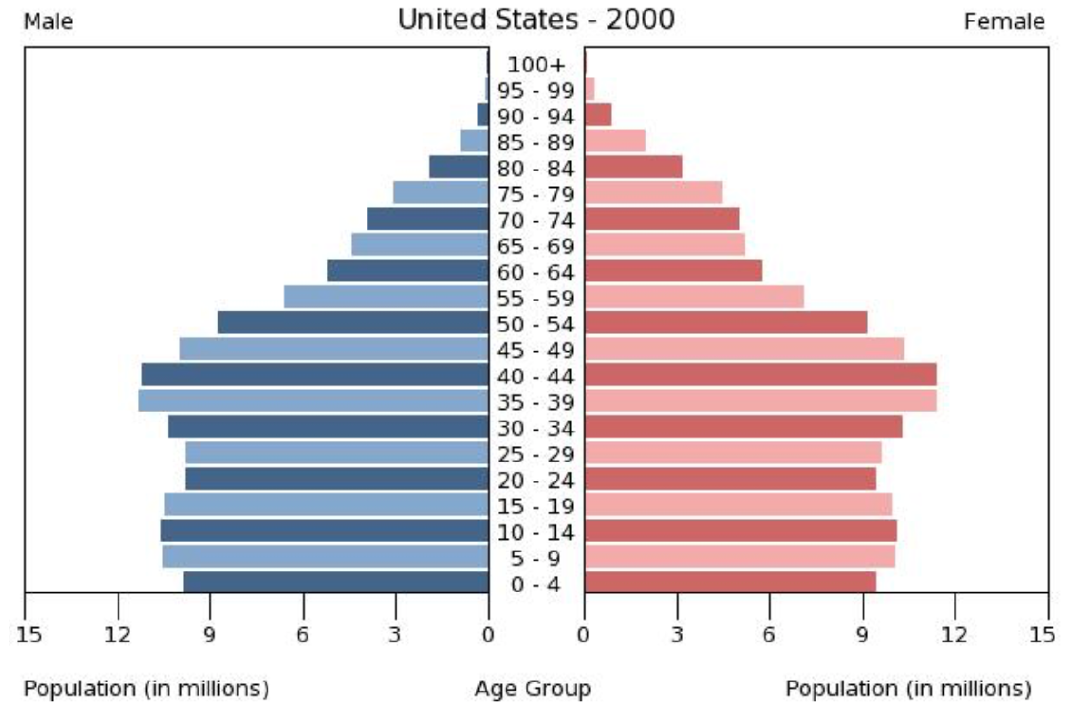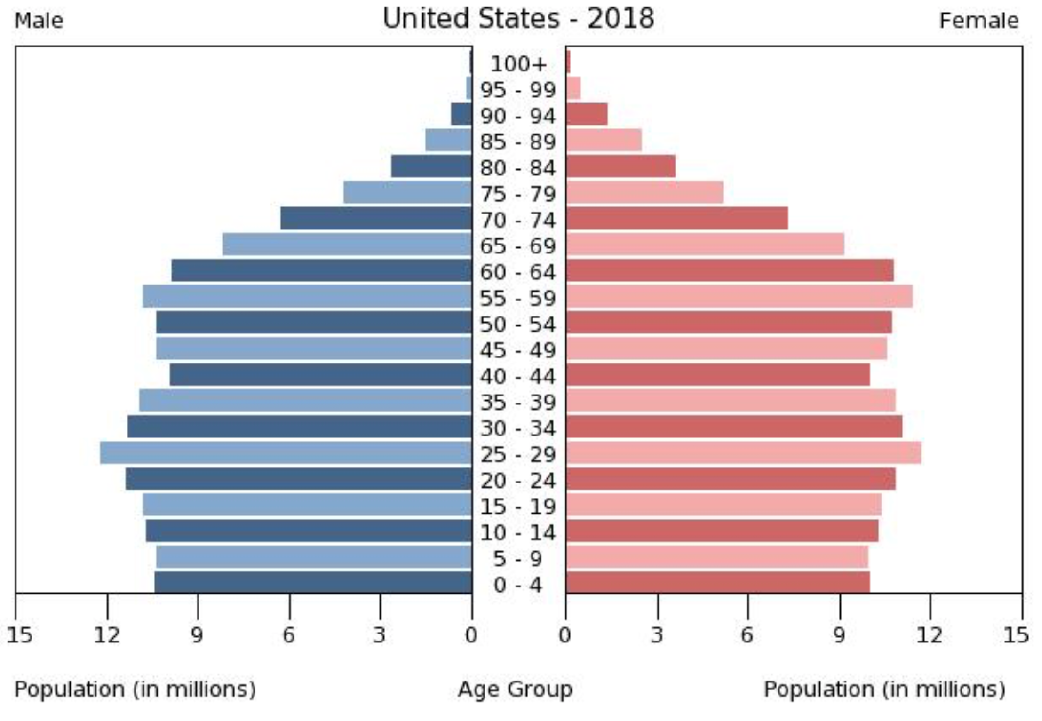In a recent worldwide study on the effects of aging on economic growth between 1990 through 2014, three economists found good news for those who worry about what the future holds for the United States as demographic change brings a rising tide of senior citizens.
We know that older people are savers. So, let’s cut to the chase: The researchers found that the extra money saved by seniors funds investment to such an extent that GDP growth responds positively. More seniors yields more GDP, not less. As with all good things, there are limits, of course. But all else equal, America’s economic outlook may actually become brighter as the over-60 share of the population increases.
The two accompanying Bureau of the Census population pyramids give us a sense of these changing demographics. One shows the U.S. population’s age distribution for 2000, and the other shows it for 2018.


Notice how the younger population has remained fairly constant throughout the last two decades (largely because of immigration), even while the over-60 population share has grown. Then, consider that in 2000, the largest population group was in its late 40s. In 2018, it is in its late 20s. (By the way, one should not expect a late-20s labor force to be as productive or well-paid as a more experienced late-40s demographic, which helps explain America’s stagnated wage growth.)
And again, keep an eye on the older component: It’s getting much larger.
These population pyramids offer some insights into the nation’s economic situation, but can they also tell us anything about the nation’s happiness? As far-fetched as that may seem, massive amounts of human happiness research tell us that we can draw significant inferences from the pyramid data.
Estimates of the relationship between self-reported happiness and age show a curve that begins with a high level around age 22 before sinking until around age 55, when the curve bottoms out and reverses its slope. After 55, reported happiness rises and reaches its highest level in a person’s 80s.
Happiness can have economic ramifications. Research also tells us that as people move into their early 60s and 70s, they become more satisfied with life, less stressed, and, one might say, less ambitious. Accordingly, we should expect an older U.S. population to be less mobile and less inclined to take risks. And we should also expect these tendencies to become more dominant as the population ages further, especially if immigration flows are reduced.
The U.S. population is aging, no doubt about it. The latest research tells us the larger senior population can yield higher GDP growth and a slightly happier country. And this sounds like good news to me.
Bruce Yandle is a contributor to the Washington Examiner ‘s Beltway Confidential blog. He is a distinguished adjunct fellow with the Mercatus Center at George Mason University and dean emeritus of the Clemson University College of Business & Behavioral Science. He developed the “Bootleggers and Baptists” political model.

